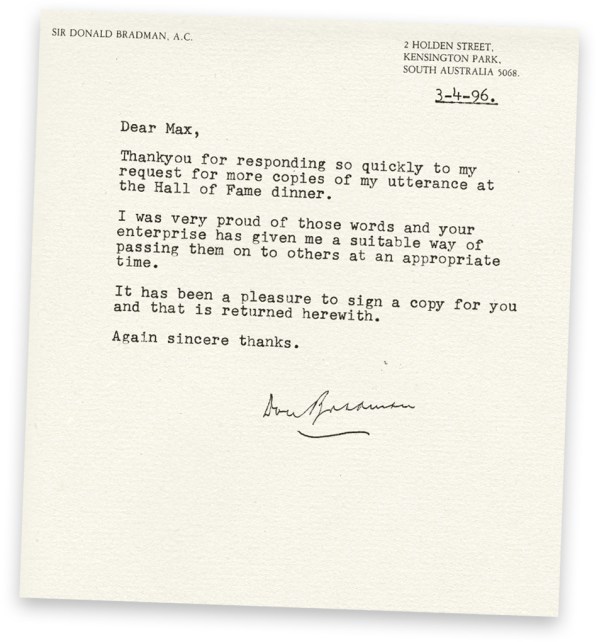 My lifelong passion for sport has always included horse racing. Indeed, I still recall how I was emotionally incapable of dealing with the breaking down of my favourite horse of the time — and great champion —Bernborough, in the LKS McKinnon Stakes of 1946, almost 68 years to the day that I write this — but I am beginning to get over it.
My lifelong passion for sport has always included horse racing. Indeed, I still recall how I was emotionally incapable of dealing with the breaking down of my favourite horse of the time — and great champion —Bernborough, in the LKS McKinnon Stakes of 1946, almost 68 years to the day that I write this — but I am beginning to get over it.
Throughout my life the Melbourne Cup always had its own fascination. Being a handicap race with horses allotted different weights according to their previous race history, the Cup has mostly not been won by champion racehorses, because until recently they were asked to carry too much weight as compared with their less talented competitors. And after all, that is what handicapping is all about: bringing the more talented ‘back to the field’.
Some great horses have still managed to defy the odds and win the Cup. To give an idea of what it takes, if the top weight Admire Rakti, a Japanese entry, wins this year, he will carry 58.5 kgs. In 1931, Phar Lap, in his failed attempt to win a second Melbourne Cup, was required to carry 10 stone 13 lbs or approximately 68.5 kgs, a massive 1 kg more over two miles (or, as now expressed, 3200 metres).
Historically, the excitement of the Cup over the years has lain in trying to pick the winner. The way one could go about this was to follow the form of the horses who had entered, almost all of whom were recognisable from their performances in either Australia or New Zealand. They followed the traditional pattern of ‘lead up’ races. It was rare indeed for the Cup winner not to have raced in one at least of the traditional races, such as the Metropolitan in Sydney, the Caulfield Cup, the Cox Plate and the LKS McKinnon Stakes.
What we have today, however, is a number of horses, many of which have not raced in this country, and there is no real way to judge their ability. How are you able to compare the form of a Japanese horse, which last raced in Germany on a grass track, with the Irish horse which last raced in Dubai on a sand track, with the English horse which last raced in America on a dirt track, with the Arab horse which last raced in Hong Kong on a synthetic track?
No longer can we romanticise and speculate about the chances of Radish winning the Cup, based on his scintillating win in the Gulargambone Cup last start. Not much room for genuine ‘Aussie’ or ‘Kiwi’ bred and raced horses these days.
Our lack of concern and respect for our sovereignty extends beyond our dairies, minerals and great tracts of pastoral land, which have been sold off to international interests. It now extends to the ‘great race’, which has become no more or no less than an international gala day for international owners, breeders and horses (and, of course, a stage for anyone who has had a part in any Channel 7 production in the last zillion years) and only happens to be staged in Melbourne and celebrated here in Australia as a beaut excuse to have a party on a work day.
So let us all enjoy the carnival atmosphere with our Melbourne Cup luncheons, our champagne, the sweeps and the multi pronged fork selections. But for those of us who embrace and respect the history of this country and the iconic status of what was ‘the cup’, we can only lament the commercial sellout of something that once was a great horse race full of genuine challenges, genuine interest and genuine excitement.
Finally, what is the point of having 10 dollars each way — ‘just for an interest’?
A boxed first 4, which is the first four horses across the line in any order, costs $24.
Last year the winning first 4 paid over $200,000.
Maxie Lewis





